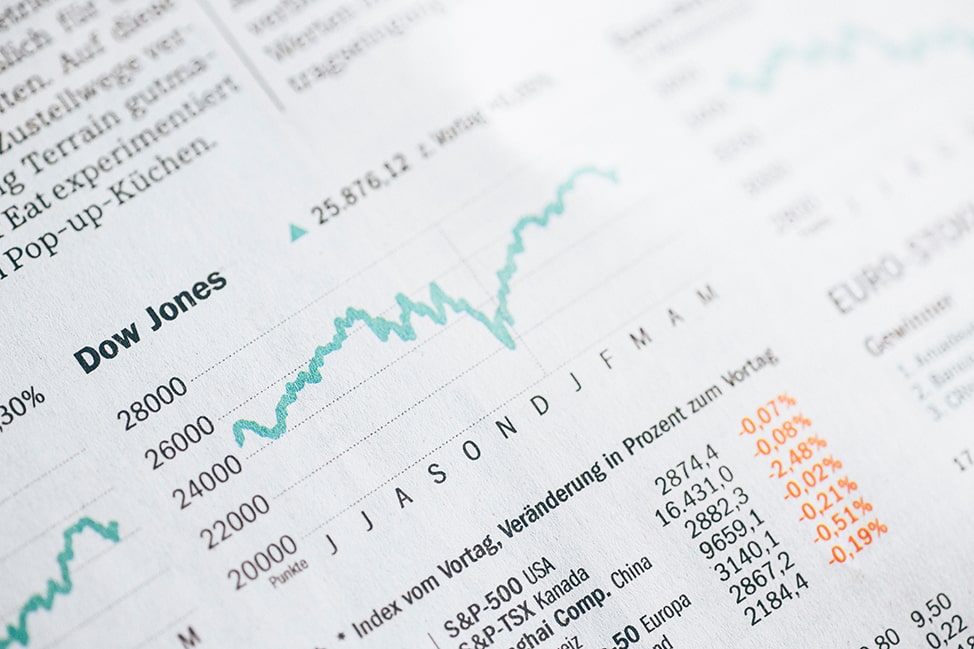If you were to believe the talking heads on MSNBC or FOX, the sky is literally always falling. You might as well call them Chicken Little. And alongside the 24/7 coverage of political scandals, worldwide health crises, and natural disasters, one of their favorite subjects to rave about are stock market fluctuations.
Trust me, I get it. I, too, have been subjected to the blood-pressure-compounding powers of the mainstream media. But as a qualified financial professional who’s actually studied the history of the marketplace, I can tell you: these fluctuations are nothing to be so scared of. In fact, if anything, they’re a good sign.
Are Market Fluctuations Actually All That Scary?
Let’s clarify the madness with some real-world numbers, shall we?
On September 20, 2018, the S&P 500 — a measuring stick that uses 500 of the greatest companies in the U.S. to track market changes — set a new all-time high of 2,930. Keep in mind that just ten years prior, it hit a critical low during the financial crisis, dropping to 676.
That means that, in the space of a single decade, the S&P 500 actually quadrupled in value… and then some! It also paid a dividend averaging 2% annually, meaning a $100,000 investment in March of 2009 would be worth more than $423,000 today (though we’re not, for the sake of simplicity, accounting for taxes).
How often have you heard about that runaway overarching success on your favorite news outlet? My guess is, you haven’t. After all, reassuring news isn’t very saleable. It doesn’t keep you glued to the TV in a fear-induced trance.
“Okay,” you might be thinking. “Big deal. The market recovered from the crisis. But what about now? A positive ten-year trend doesn’t mean my money isn’t in peril.”
You’re right about that. We’ve all heard about the recent market volatility and the prophecies of doom and gloom for the coming years. In fact, I’ll go so far as to agree with the Chicken Little rants and raves to this extent: the market will go down, and probably sooner than later. It’s a “when, not if” scenario.
But it’s still not something you should be afraid of. Here’s why.
Market Fluctuations are a Normal Part of the Program
Remember that high I mentioned, when the S&P climbed to 2,930 in September of 2018? Well, by early December, it had fallen again — by 14%, which is a number that gives a lot of my clients pause.
And, yes, 14% of your money is a lot of money. And it’s real money you’re losing. But here’s the thing: since 1980, the S&P 500 has declined 14%, on average, during the course of every single year, while still seeing a steady (and significant) upward trend in the long run. In other words, that shocking, scary amount of 2018 Q4 market volatility was just the stock market doing what it always does.
Of course, that’s cold comfort when you’re watching your investments lose value. Those fluctuations have many of my clients calling in a tizzy, asking, “What if it gets worse?”
What if, indeed? It almost certainly will. In fact, we’re years overdue for a real bear market decline of 20% or more. And when that bear rears its seemingly-ugly head, it’s actually a cause for celebration. Without these temporary falls, we’d never be able to experience long-term growth of the magnitude we’ve generally enjoyed over the past decade. (We’ll also take great comfort in your war chest of cash and bonds.
Weathering Fluctuations With Sound Financial Planning
So, what should you do about Chicken Little’s screams as you navigate your own financial journey? Your best bet is to simply ignore them as the ravings of a lunatic — a lunatic who’s being paid to make you feel anxiety and fear.
Take a step back, breathe a deep breath, and remember that these temporary declines are the price we pay for long-term growth. (And maybe consider where you’d be today if you’d taken Chicken Little at his word during the financial crisis of 2008, the credit downgrade of 2011, or after the 2016 presidential elections. Somehow, we’ve weathered it all, and the sky hasn’t fallen.)
Of course, it also helps to have a qualified financial professional in your corner.
The key to feeling confident in your future is putting a solid financial plan into place and playing the long game. Our job is to help you set your goals and draw up the best play to achieve them, which can help you ignore the jeering of the opposition.
So if you’re still feeling nervous about market fluctuations, please reach out to set up a meeting or learn more about our upcoming client events.
And most importantly, *thank you* for continuing to follow our professional advice despite the screams of Chicken Little. We promise, he really doesn’t know what he’s talking about — and unlike us, he doesn’t have your best interests in mind.













